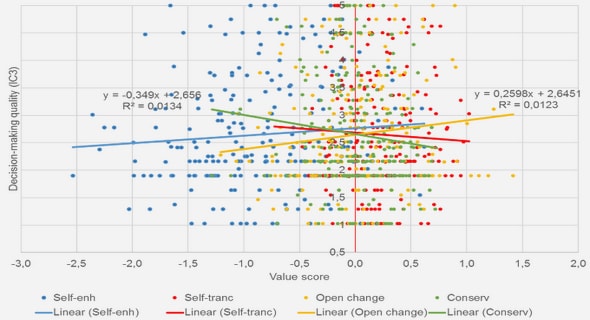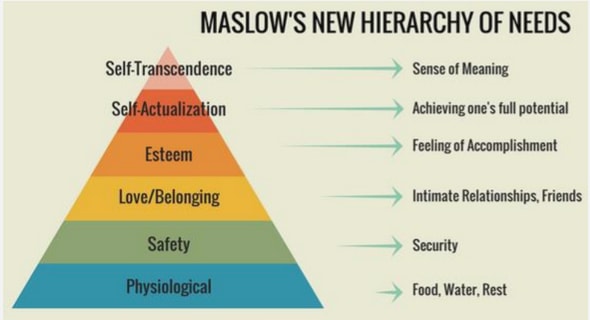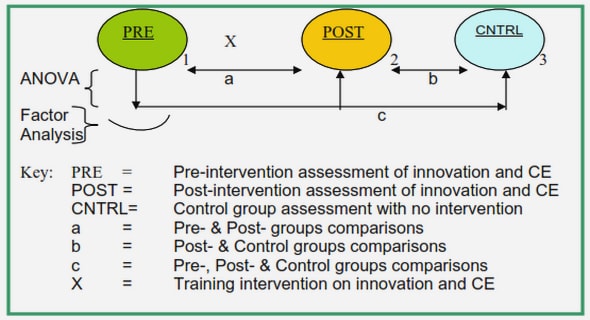Get Complete Project Material File(s) Now! »
Chemical methods for synthesis of metal nanoparticles
A metal salt or a metal complex is used as a precursor in solution or on supports (substrates) and is reduced by chemical agents or via radiation as we will explain later. In general, to obtain stable nanoparticles in solutions, synthesis proceeds in the presence of stabilizing agents (ligands, surfactants or polymers). Stability of colloidal solutions containing metal nanoparticles is either electrostatic or steric (Figure I-8). Electrostatic stability is due to a repulsive force generated by an electric double layer between charged nanoparticles in solution. Steric interactions with the stabilizing agents create a barrier that separates nanoparticles (polymer thiol chains can be an example) and can lead to stability of the colloidal solution.
Türkevich synthesis of gold nanoparticles
Türkevich method is probably one of the most basic and reproducible method for the synthesis of Au NPs. J. Turkevich et al [21] first published this method in 1951, and then G. Frens [22] studied this method extensively and developed it by adding the parameter of gold-to-reductant ratio to well control the nanoparticle size. Türkevich method is based on the reduction of an Au(III) salt (HAuCl4 or KAuCl4) in aqueous solution by trisodium citrate. Citrate plays a double role: reducing and stabilizing agent. Indeed, it will reduce AuIII into Au0 and stabilize in the same time the formed Au nanoparticles. Because citrate is a weak reducing agent, the AuIII solutions are heated and generally boiled [9]. Türkevich-based methods can be also used for different precursors to form palladium, platinum, and bimetallic nanoparticles (NPs) such as silver-gold NPs.
In this study, we choose Türkevich-Frens method to synthesize Au nanoparticles in solutions because of the easiness and reproducibility of the method and the weak ligand character of citrate, which can be exchanged easily with other stronger ligands.
Deposition-Precipitation Method
Deposition-precipitation (DP) method is widely used by researchers to synthesize metal nanoparticles of controlled size on supports [4,23]. Typically, the supporting material, generally an oxide powder, is immersed into an aqueous solution of HAuCl4 under stirring and fixed pH. Then, the catalyst precursor is recovered via centrifugation followed by washing steps with distilled water and sometimes ammonia to ensure maximum removal of Cl- ions. The latter ions can affect the tuning of gold nanoparticles shape and morphology, as they tend to form undesired products during the thermal reduction of catalyst precursor. Afterwards, the remaining powder is calcinated (thermally treated under oxygen) in order to achieve certain size and morphology of gold nanoparticles.
Thermal reduction process consists in general in three steps:
(1) A slow rise in temperature until the desired calcination temperature is reached.
(2) A plateau of 2 hours at constant temperature should be maintained.
(3) A cooling-off at the same rate (in absolute value) as the initial temperature rise.
Any variation of temperature during the calcination plateau can affect the size of gold nanoparticles especially, when working on Au nanoparticles on TiO2 [19,23]. Deposition method can also use other “reduction” methods to obtain gold nanoparticles. The replacement of calcination method can include photoreduction, radiolysis, and even chemical reduction and stabilization.
Synthesis of metal nanoparticles by radiolysis
Radiolysis is a powerful technique to synthesize metal nanoparticles of controlled size and shape in solutions and on supports [24-26]. This technique was largely developed in the Laboratoire de Chimie Physique (LCP, Université Paris-Sud). In this technique, solvated electrons and reducing radicals induced by solvent radiolysis are responsible of reducing the metal precursors [25]. Radiolysis presents the advantage of inducing a homogeneous reduction and nucleation in the whole volume of the sample leading to homogeneous nucleation and growth.
The primary effects of the interaction of high-energy radiation such as particle beams, X-rays or gamma photons with a solution of metal ions are the excitation and the ionization of the solvent molecules, which lead to the formation of primary species. In case of water, these primary species are: H2O→e(𝑎𝑞)−,H3O+,H.,OH.,H2,H2O2.
Catalysis assisted by plasmon of metal nanoparticles
In the following paragraphs, we will try to go over the latest developments in the field of catalysis assisted by plasmonic nanostructures. Since most of the work introduced in this manuscript is focused on gold nanoparticles, we will emphasis on that particular aspect. In addition to photophysical processes, optically excited plasmonic nanoparticles can also activate and induce chemical transformations directly on their surfaces. This phenomenon is called plasmonic catalysis and offers opportunities in reduction or oxidation reactions and in the field of selective chemical synthesis [57].
In the last decade, application of plasmonic nanoparticles for solar to electrical energy and solar to chemical fuel conversions attracted a lot of interest. In a review, Linic et al. summarized recent progress in the field of photochemical catalysis on plasmonic metallic nanostructures [44]. The use of LSPR excitation to drive photocatalysis is called plasmonic photocatalysis and falls into two categories: (a) indirect photocatalysis, where excitation of LSPR is used to transfer photon energy to nearby semi-conductors, molecular photocatalysts, and other metals to drive chemical reaction, and (b) direct photocatalysis, where excited metal nanoparticles act as direct catalytic active sites. In the present work we will focus on direct photocatalysis (where the metal nanoparticles are not supported). By precise control of the size, shape, and environment of a plasmonic metal nanostructure, it is possible to design efficient plasmonic photocatalysts for applications.
Plasmon assisted catalysis with non-supported metal nanoparticles:
Surface plasmon excitation of colloidal gold nanoparticles with visible light in the presence of H2O2 led to rapid and selective oxidation of sec-phenethyl and benzyl alcohols to acetophenone and benzaldehyde, respectively (Figure I-14). Au NPs were excited by light (through both 532 nm laser and 530 nm LED techniques) or via microwave irradiation [58].
The authors proposed electron transfer with the nanoparticle surface, as well as the participation of peroxyl and ketyl free radicals as fundamental steps in the reaction pathway.
Plasmon assisted catalysis via supported metal nanoparticles
Different inert supports are commonly used to deposit metal nanoparticles for application in catalysis such as: alumina (Al2O3), Silica (SiO2), ceria (CeO2), zirconia (ZrO2), zeolites, hydrotalcite (Mg6Al2(CO3)(OH)16) [4]. The first example of plasmonic catalysis by metal NPs on inert supports was reported by Hallet-Tapley et al. who showed the conversion of benzyl alcohol in benzaldehyde and 1-phenylethanol in acetophenone by Au NPs deposited on hydrotalcyte, alumina or zeolites (1% in mass) and excited by LED at 530 nm (Figure I-16) [58].
NaY zeolites decorated with Au NPs were used to catalyze the acetalization of aromatic aldehydes with methanol [61]. Interestingly, Zhang et al. reported that enhanced catalytic performance of zeolites via the plasmonic effect of gold nanoparticles is closely correlated with the molecular polarity of reactants. The intensified polarized electrostatic field of Na+ in NaY zeolites plays a critical role in stretching the C=O bond of aldehydes to improve the reaction rate. The catalysts could be recycled and reused after five runs, but a small decay in catalytic activity was observed. The AuNPs also exhibit significant ultraviolet (UV) absorption because of interband transitions of electrons from 5d to 6sp. Visible light and UV irradiation constitute around 43 % and 4 % of the solar energy emitted by the sun, respectively. The sun spectrum is summarized in Figure I-17.
Plasmonic NPs supported on photocatalytic substrates
TiO 2 is a very efficient photocatalyst due to its strong oxidation capacity, high photochemical and biological stability and low cost. Since the discovery of photoinduced decomposition of water on a TiO 2 electrode, TiO 2 based photocatalysts have attracted wide attention 69 The limitation in TiO 2 application, results from low quantum yield due to fast charge carriers (electron/hole e –/h+) recombination and its activation only under UV irradiation because of the value of its band gap (3.2 eV for anatase and 3.0 eV for rutile). UV light constitutes only about 3 4 % of the solar spectrum impin ging on the Earth’s surface, therefore modification of titania to extent its absorption to visible domain and to enhance its activity is a very active area of research. Surface modification with noble metal (platinum, palladium, silver, gold) nanoparticles (NPs) can result in enhancement of the photo conversion quantum yield and may allow the extension of the light absorption of wide band gap semiconductors to the visible light. In particular, plasmonic photocatalysts have appeared as a very promising way t o induce a photocatalytic app lications: water depollution and hydrogen production.
In the plasmonic photocatalytic Au/TiO22 system, the presence of Au is essential, due system, the presence of Au is essential, due to their localized surface plasmon resonance (LSPRto their localized surface plasmon resonance (LSPR)). These plasmonic properties can be . These plasmonic properties can be used to induce photocatalytic activity of the semiconductor material under visible light. used to induce photocatalytic activity of the semiconductor material under visible light. However, the support presents also important effects on the photocatalytic processes, However, the support presents also important effects on the photocatalytic processes, i.e.i.e., , (i)(i) the electronthe electron–hole recombination fohole recombination for anatase and rutile particles has been studied and r anatase and rutile particles has been studied and was found to be higher for rutile than anatase; was found to be higher for rutile than anatase; (ii)(ii) the higher Fermi level of anatase results the higher Fermi level of anatase results in stronger electronic interaction with Auin stronger electronic interaction with Au–NPs, which can inhibit the growth and NPs, which can inhibit the growth and aggregation of metal nanoparaggregation of metal nanoparticle; ticle; (iii)(iii) the difference in energy band gap of anatase (3.2 the difference in energy band gap of anatase (3.2 eV) and rutile (3.0 eV) could result in activation of TiOeV) and rutile (3.0 eV) could result in activation of TiO22 at longer wavelengths for rutile at longer wavelengths for rutile and finally, and finally, (iv)(iv) the dielectric constant of the support could shift the LSPR of metal the dielectric constant of the support could shift the LSPR of metal nanoparticlesnanoparticles toward the red spectral region. For example, it was shown that crystalline toward the red spectral region. For example, it was shown that crystalline composition and surface properties of Au/TiOcomposition and surface properties of Au/TiO22 photocatalysts, prepared by photocatalysts, prepared by photodeposition of gold on fifteen commercial titania, influenced significantly the photodeposition of gold on fifteen commercial titania, influenced significantly the resultant photocatalytresultant photocatalytic activities in a different manner under UV and visible light ic activities in a different manner under UV and visible light irradiationirradiation [[7070]].. Small gold nanoparticles (AuSmall gold nanoparticles (Au–NPs) around 2NPs) around 2–3 nm on the surface of 3 nm on the surface of titanium dioxide work as visibletitanium dioxide work as visible–light absorbers and thermal redox active centers. Aulight absorbers and thermal redox active centers. Au–NPs NPs were synthesized on commercial TiOwere synthesized on commercial TiO22 by reduction with tetrakis(hydroxymethyl)by reduction with tetrakis(hydroxymethyl)–phosphonium chloridephosphonium chloride [[7171]].. The photocatalytic activity of Au/ TiOThe photocatalytic activity of Au/ TiO22 was evaluated for was evaluated for degradation of phenol, 2degradation of phenol, 2–propanol, acetic acid and for Hpropanol, acetic acid and for H22 production from aqueous production from aqueous methanol solution. This photocatalytic activity was much higher for the plasmonic TiOmethanol solution. This photocatalytic activity was much higher for the plasmonic TiO22 compared to the activity of bare titania. Time resolved microwave conductivity (TRMC) compared to the activity of bare titania. Time resolved microwave conductivity (TRMC) signals showed injection of electrons from Ausignals showed injection of electrons from Au–NPs to the cNPs to the conduction band of TiOonduction band of TiO22 under under visiblevisible–light excitation, due to the activation of localized surface plasmon resonance light excitation, due to the activation of localized surface plasmon resonance (LSPR) of the Au(LSPR) of the Au–NPsNPs [[7171]]. Action spectra (AS) correlated with the absorption spectra . Action spectra (AS) correlated with the absorption spectra proving that decomposition of model pollutants is carried out by a photocatalytic proving that decomposition of model pollutants is carried out by a photocatalytic mechanismmechanism. Au. Au– TiOTiO22 were also active for hydrogen evolution under visible light. It has were also active for hydrogen evolution under visible light. It has been also shown that these photocatalysts can be reused several times without appreciable been also shown that these photocatalysts can be reused several times without appreciable loss of activity. loss of activity.
Table of contents :
General introduction
Chapter I: State of the art
I- Metal nanoparticles in history and nowadays
II- Synthesis of metal nanoparticles
II-1- Physical methods for synthesis of metal nanoparticles
II-1-1- Magnetron sputtering
II-1-2- Laser vaporization or ablation
II-2- Chemical methods for synthesis of metal nanoparticles
II-2-1- Türkevich synthesis of gold nanoparticles
II-2-2- Deposition-Precipitation Method
II-3- Synthesis of metal nanoparticles by radiolysis
III- Properties of metal nanoparticles and applications
III-1- Catalytic properties
III-2- Optical properties
III-3- Biological applications
IV- Catalysis assisted by plasmon of metal nanoparticles
IV-1- Plasmon assisted catalysis with non-supported metal nanoparticles:
IV-2- Plasmon assisted catalysis via supported metal nanoparticles
IV-3- Plasmonic NPs supported on photocatalytic substrates
V- Conclusion
Chapter II: Experimental setups, materials and methods
I- Synthesis of metal nanoparticles and nanostructures
I-1- Türkevich synthesis of spherical gold nanoparticles in solution
I-2- Synthesis of Palladium Nanoflowers
II- Characterization techniques of the metal nanostructures
II-1- UV–Visible absorption spectroscopy
II-2- Transmission Electron Microscopy (TEM)
II-3- X-Ray Photoelectron Spectroscopy (XPS)
III- Analytical methods
III-1- Electrospray Ionization Mass Spectrometry
III-2- Gas Chromatography coupled with Mass Spectroscopy
III-3- Surface Raman Enhanced Spectroscopy (SERS)
IV- Irradiation setups
IV-1- Xenon Lamp equipped with a longpass filter
IV-2- Homemade LED-based cylindrical photochemical reactor
IV-3- Continuous green laser excitation
V- Chemicals
Chapter III: Degradation of para-nitrothiophenol by plasmon exciation of gold nanoparticles
I- Introduction
II- Sample preparations and irradiation
III- Degradation of pNTP followed by UV-visible spectroscopy
IV- Characterizations of the formed products
IV-1- Analysis of the supernatant
IV-1-1- ESI-MS spectra of known compounds
IV-1-1- ESI-MS spectra of the irradiated solutions
IV-2- SERS analysis of the AuNPs surface
V- Discussion
VI- Conclusion
Chapter IV: Hexacyanoferrate (III) reduction by electron transfer induced by plasmonic catalysis on gold nanoparticles
I- Introduction
II- Experimental details
III- Reduction of hexacyanoferrate in the presence of sodium thiosulfate
III-1- Irradiation using LEDs at 520 nm
III-2- Irradiation using a Xe lamp equipped with a 450 nm optical cutoff filter
IV- Reduction of hexacyanoferrate in the absence of sodium thiosulfate
IV-1- Irradiation using LEDs at λ = 520 nm
IV-2- Irradiation using a Xe lamp equipped with a 450 nm optical cutoff filter
IV-3- Effect of stabilizing agent of the Au-NPs
V- Discussion
VI- Conclusions
Chapter V: Plasmonic catalysis for Suzuki-Miyaura cross-coupling reaction using Palladium nanoflowers
I- Introduction
II- Pd nanoflowers as catalysts
III- Catalytic study of the Suzuki-Miyaura cross coupling reactions
III-1- Experimental details
III-2- Reaction between iodobenzene and phenylboric acid
III-3- Reactions between other haloarenes and phenylboric acid
III-4- Proposed mechanism
IV- Pd nanoflowers after catalysis
V- Conclusion
Conclusion and perspectives
Annex: Gas phase oxidation of CO to CO2 assisted by plasmon of gold nanoparticles
I- Synthesis of gold nanoparticles on support
I-1- Deposition-Precipitation (DP) with urea
I-2- Synthesis after impregnation of gold ions on silica (SiO2) substrate
II- Oxidation of CO
II-1- Reactor
II-2- Results
II-3- Perspectives
Résumé de thèse


